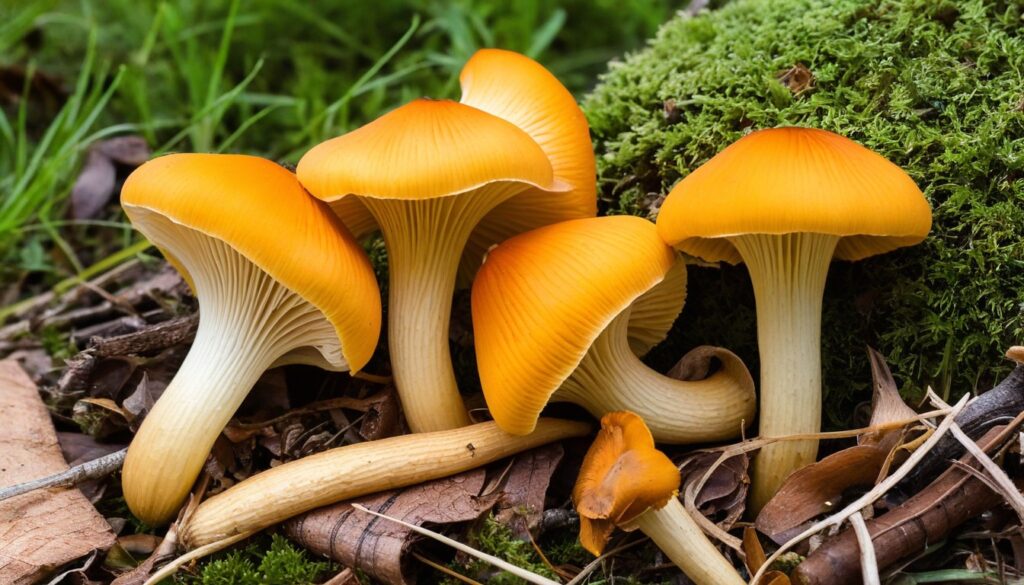In Washington State, the lush forests are home to one of the most prized edible mushrooms in the world – the Chanterelle. With its unique flavor and texture, it’s no wonder these fungi are sought after by food enthusiasts and foragers alike. In this comprehensive guide, we will take you on a journey through the world of Chanterelle mushrooms in Washington State. You’ll learn about the different varieties, where and when to find them, how to identify and harvest them safely, and various cooking and preservation techniques. So, whether you’re a seasoned forager or simply curious about the culinary wonders of the natural world, join us for an adventure into the enchanting world of Chanterelle mushrooms.
Key Takeaways:
- Washington State is home to prized Chanterelle mushrooms that offer unique flavors and culinary possibilities
- The guide offers a comprehensive overview of where and when to find Chanterelle mushrooms, how to identify and harvest them safely, and various cooking and preservation techniques
- Chanterelle mushrooms provide not only delicious taste but also numerous health benefits
- It’s essential to take safety precautions and conservation practices while foraging mushrooms to preserve the natural habitats
- By exploring expert tips and mouth-watering recipes, it’s possible to unlock the full potential of Chanterelle mushrooms and elevate culinary experience.
What are Chanterelle Mushrooms?
Chanterelle mushrooms are a highly sought-after fungi that grow in the forests throughout Washington State. These mushrooms are famous for their beautiful color and delicate flavor profile. Golden Chanterelles have a bright, yellow-orange hue, while Black Trumpet Chanterelles have a darker brownish-black shade.
Chanterelle mushrooms are easy to recognize due to their wavy edges and trumpet-like shape. These mushrooms grow on the ground near trees, and can range in size from small buttons to large, meaty caps. They have a subtle aroma and a slightly sweet, nutty taste that pairs well with a variety of dishes.
One unique aspect of Chanterelle mushrooms is that they cannot be mass-produced. Each mushroom must be foraged by hand, making them a rare and precious ingredient in the culinary world. Despite the extra effort required to find them, these mushrooms are well worth the hunt!
Chanterelle Mushroom Varieties in Washington State
Washington State is home to several varieties of Chanterelle mushrooms, each with its own unique flavor and appearance. Here are some of the most common types:
|
Chanterelle Variety |
Appearance |
Flavor Profile |
|---|---|---|
|
Golden Chanterelle |
Pale to bright yellow, with a trumpet-shaped cap and ridges that run down the stem. |
Distinctly fruity and nutty, with earthy undertones. |
|
White Chanterelle |
Small to medium-sized, with a light-colored cap and modified gills that fork outwardly from the stem. |
Mild and delicate, with a subtle sweetness and nutty undertones. |
|
Black Trumpet |
Small and trumpet-shaped, with a dark chocolate to black cap and a smooth, hollow stem. |
Intensely rich and smoky, with undertones of black licorice. |
|
Yellowfoot Chanterelle |
Also known as the “Winter Chanterelle,” these mushrooms have a small, trumpet-shaped cap and a bright yellow-orange coloration. |
Slightly nutty and peppery with a delicate sweetness and velvety texture. |
Each Chanterelle variety thrives in specific environmental conditions, making their appearance highly dependent on where and when they are harvested. The Golden Chanterelle can usually be found in late summer or early fall, while the Black Trumpet and Yellowfoot Chanterelle can be found in late fall or winter. No matter which variety you come across, be sure to savor their unique flavors in your favorite Chanterelle mushroom recipes.
When and Where to Find Chanterelle Mushrooms in Washington State
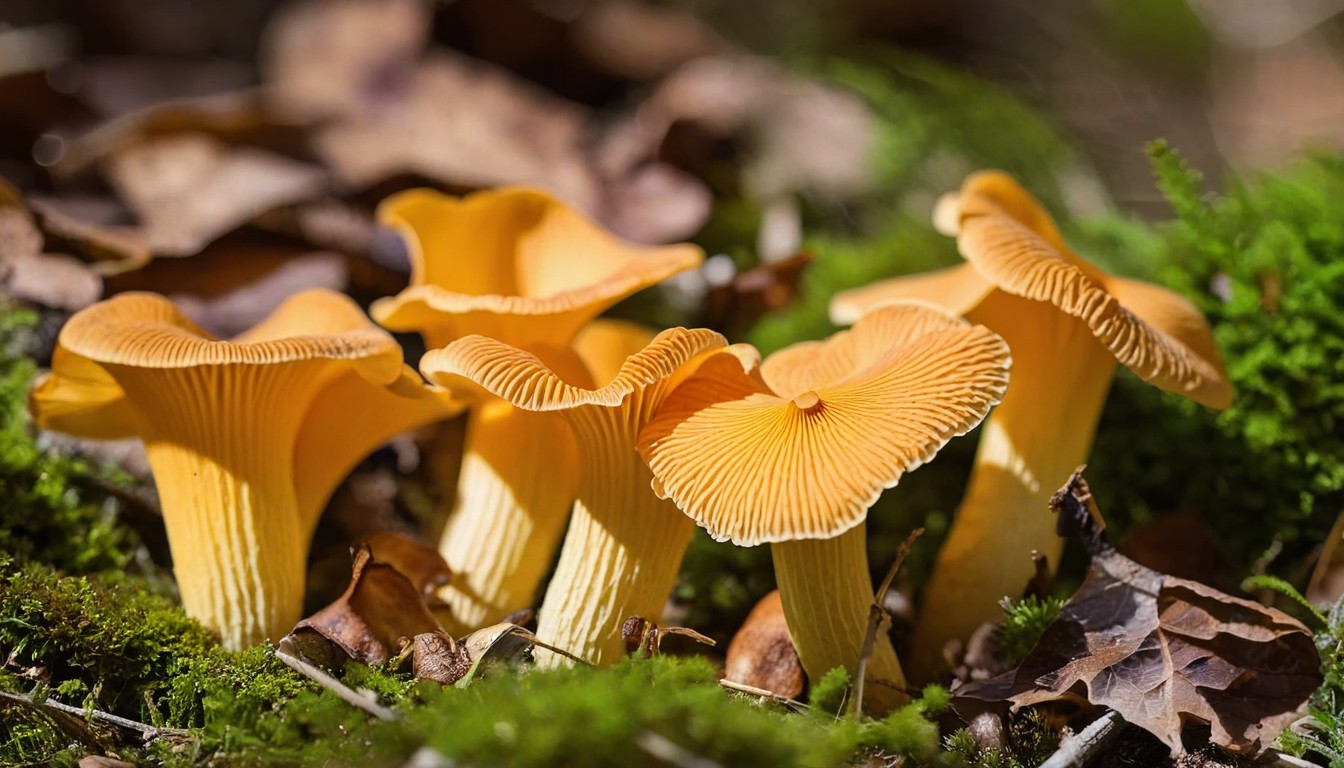
Foraging Chanterelle mushrooms in Washington State can be a thrilling adventure. However, as with any fungi hunting, timing and location are key factors in finding success. Most Chanterelle varieties can be found from late summer through fall when the weather is damp, and the soil is moist.
When searching for Chanterelles, keep in mind their preferred habitats. These mushrooms tend to thrive in forests, particularly around conifer and deciduous trees. Look for areas with lots of shade, as they prefer cool, damp locations. Some popular locations for Chanterelle hunting include the Olympic Peninsula, North Cascades, and Mount Rainier.
It’s important to note that not all forests in Washington State allow foraging, so be sure to check and obtain any necessary permits before heading out. Additionally, it’s crucial to properly identify Chanterelle mushrooms before harvesting, as they can be mistaken for poisonous lookalikes.
Tips for Finding Chanterelle Mushrooms in Washington State
“Look for areas with lots of shade, as they prefer cool, damp locations.”
|
Chanterelle Mushroom Variety |
Time Frame for Foraging |
Ideal Habitat |
|---|---|---|
|
Golden Chanterelle |
August to November |
Deciduous and conifer forests, particularly near moss-covered logs and stumps |
|
White Chanterelle |
July to September |
Deciduous forests, particularly near alder and maple trees |
|
Black Trumpet Chanterelle |
June to August |
Conifer forests, particularly near Douglas fir and hemlock trees |
Armed with the knowledge of the ideal habitats and foraging times, a successful Chanterelle mushroom hunt in Washington State is within reach. Ensure that you always follow safe and responsible foraging practices when harvesting these beautiful fungi.
Identifying and Harvesting Chanterelle Mushrooms
Foraging Chanterelle mushrooms can be a rewarding experience, but it’s crucial to identify and harvest them safely. Here are some essential tips and techniques to become a skilled forager:
- Know your mushrooms: Chanterelles have a distinct earthy aroma and a funnel-shaped cap with wavy edges. Their cap color can range from light yellow to dark orange, and their gills run down the stem.
- Location matters: Chanterelles grow in deciduous and coniferous forests, often near streams or in mossy areas. Look for them in late summer and early fall.
- Harvest carefully: Use a sharp knife to cut the mushroom at the base of the stem, leaving a small part of the stem intact. Avoid pulling the mushroom out of the ground, as it can damage the mycelium.
- Leave some behind: To preserve the future growth of Chanterelles, leave some mushrooms behind and avoid over-harvesting.
By following these tips, you’ll be able to identify, harvest, and enjoy the bounties of Chanterelle mushroom for years to come.
Cooking with Chanterelle Mushrooms
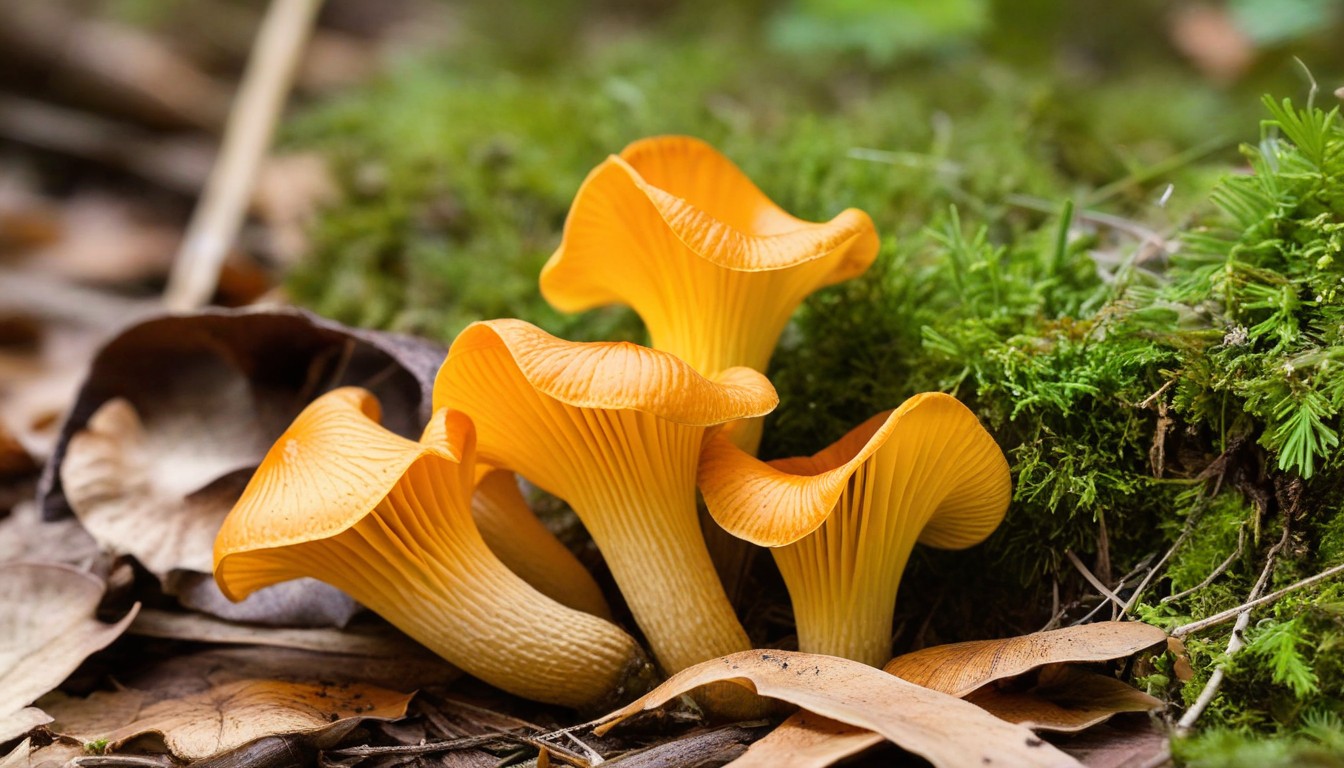
Chanterelle mushrooms are a versatile ingredient that can add a unique flavor to any dish. Here are some simple yet delicious ways to cook with Chanterelle mushrooms:
- Sauté Chanterelles with butter and garlic to enjoy their natural flavor.
- Use Chanterelles to add depth to cream-based sauces and soups.
- Pair Chanterelles with pasta or risotto for a satisfying meal.
- Incorporate Chanterelles into omelets or quiches for a savory breakfast or brunch option.
For those looking for more gourmet recipes, Chanterelles can be used in a variety of dishes, such as:
|
Chanterelle and Truffle Risotto |
Chanterelle Tart |
|---|---|
|
A luxurious dish that brings together the earthy flavors of both Chanterelle and truffle mushrooms, paired with creamy Arborio rice. |
A savory tart with a crispy crust, filled with Chanterelle mushrooms, caramelized onions, and goat cheese. |
|
Ingredients: – 1 cup Arborio rice – 4 cups chicken broth – 1/2 pound Chanterelle mushrooms – 2 tablespoons truffle oil – 1/2 cup grated Parmigiano-Reggiano Directions: 1. Sauté the Chanterelle mushrooms in 1 tablespoon of truffle oil until tender. Remove from pan and set aside. 2. Add Arborio rice to the pan and stir until coated in oil. 3. Gradually add chicken broth, 1 cup at a time, stirring constantly and waiting until each addition is absorbed before adding the next. 4. Once the rice is cooked, add the Chanterelles, the remaining truffle oil, and grated Parmigiano-Reggiano. Stir until combined. 5. Serve in bowls with a drizzle of truffle oil on top. |
Ingredients: – 1 pre-made pie crust – 2 cups Chanterelle mushrooms – 2 tablespoons butter – 1 onion, chopped – 1/2 cup goat cheese – Salt and black pepper to taste – 1 tablespoon chopped fresh thyme Directions: 1. Preheat oven to 375°F. 2. Melt butter in a pan over medium heat and cook onions until caramelized. 3. Add Chanterelle mushrooms, salt, pepper, and thyme to the pan and cook for 5-10 minutes until tender. 4. Roll out pie crust and place it into a tart pan. 5. Fill the pie crust with the mushroom mixture and sprinkle with crumbled goat cheese. 6. Bake for 20-30 minutes or until the crust is golden brown and the filling is set. |
The possibilities of cooking with Chanterelle mushrooms are endless, from simple preparations to elaborate gourmet dishes. Let your taste buds be your guide!
Preserving Chanterelle Mushrooms for Longevity
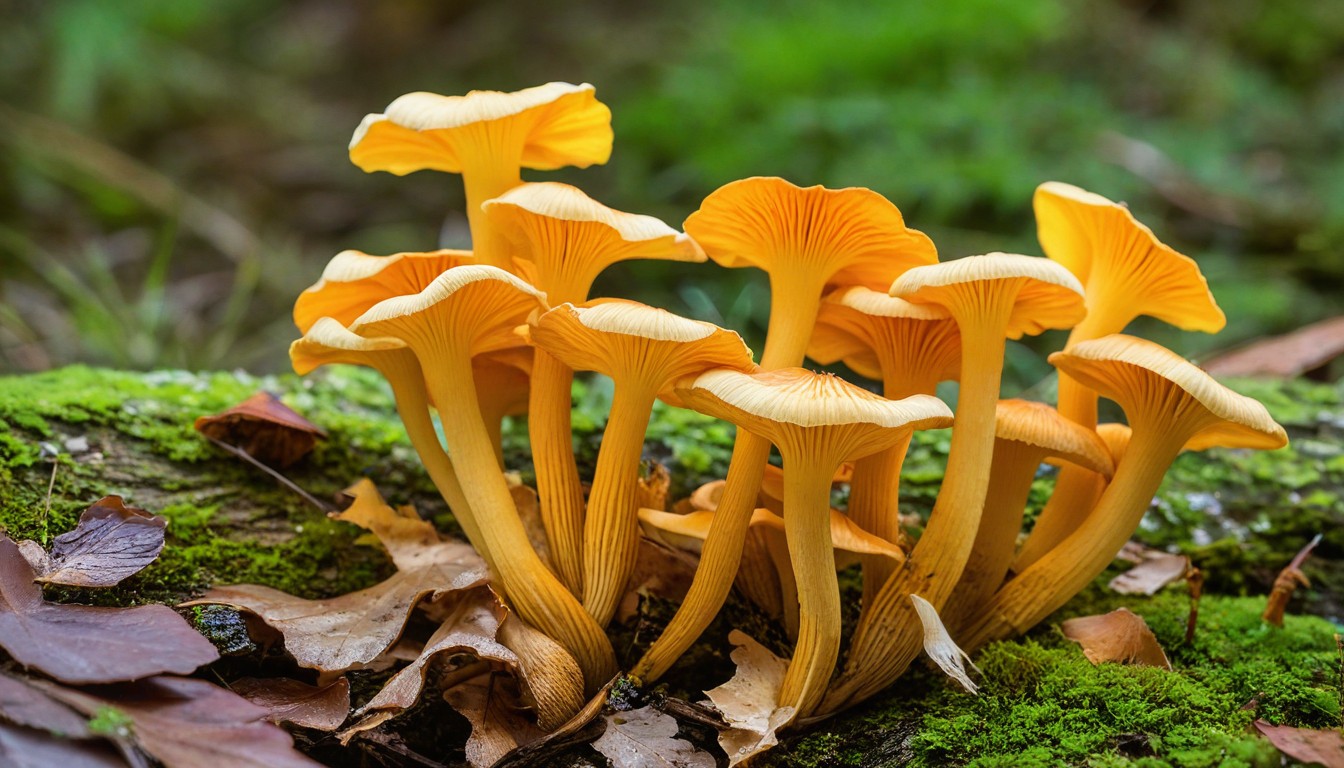
One of the best ways to make sure you can still enjoy the fantastic flavors of Chanterelle mushrooms long after the foraging season has ended is by preserving them through various techniques. Drying: Drying your Chanterelle mushrooms is an incredible way to preserve them for future consumption. Simply slice them into thin pieces, and place them on a wire rack or parchment paper in a well-ventilated room. Turn them occasionally until they are completely dry. You can store them in an airtight container for up to one year. Pickling: Pickling is another excellent preservation technique for Chanterelle mushrooms. You can pickle them in vinegar, water, and sugar solution, along with your favorite spices and herbs. This technique can help to preserve the mushrooms’ texture and flavor for an extended period. Freezing: You can also freeze your Chanterelle mushrooms in an airtight container or freezer bag. Freezing works well for preserving the texture, but it can cause the mushrooms to lose some of their flavors. Before freezing, make sure to sauté them first to lock in their flavor and aroma. Table: Comparison of Chanterelle Mushroom Preservation Techniques
Preservation TechniquesProsConsDryingLong shelf life, no need for refrigerationLoses some flavor, need for careful storagePicklingPreserves texture and flavor, adds new flavor elementsTime-consuming process, may not be suitable for all dishesFreezingRetains texture and shapeFlavor may be lost, limited shelf life
By using these preservation techniques, you can extend the shelf life of your Chanterelle mushrooms, ensuring that you can continue to enjoy their unique taste even when they are out of season.
Health Benefits of Chanterelle Mushrooms
Chanterelle mushrooms offer more than just a delectable taste – they also come with a host of health benefits.
|
Nutrient |
Amount per 100g |
|---|---|
|
Vitamin D |
114% of daily recommended intake |
|
Vitamin B3 |
36% of daily recommended intake |
|
Copper |
45% of daily recommended intake |
|
Potassium |
10% of daily recommended intake |
As the only plant-based food source of vitamin D, Chanterelle mushrooms are essential for maintaining healthy bones and teeth. They also contain antioxidants that help prevent cellular damage and may reduce the risk of chronic diseases such as cancer and Alzheimer’s.
With their high fiber and low-calorie content, Chanterelle mushrooms are an excellent addition to any weight loss diet. They also contain beta-glucans that improve heart health and boost the immune system, making them an ideal food for overall well-being.
Incorporate Chanterelle mushrooms into your cooking for both their delicious flavor and their numerous health benefits.
Culinary Tips and Recipes for Chanterelle Mushrooms
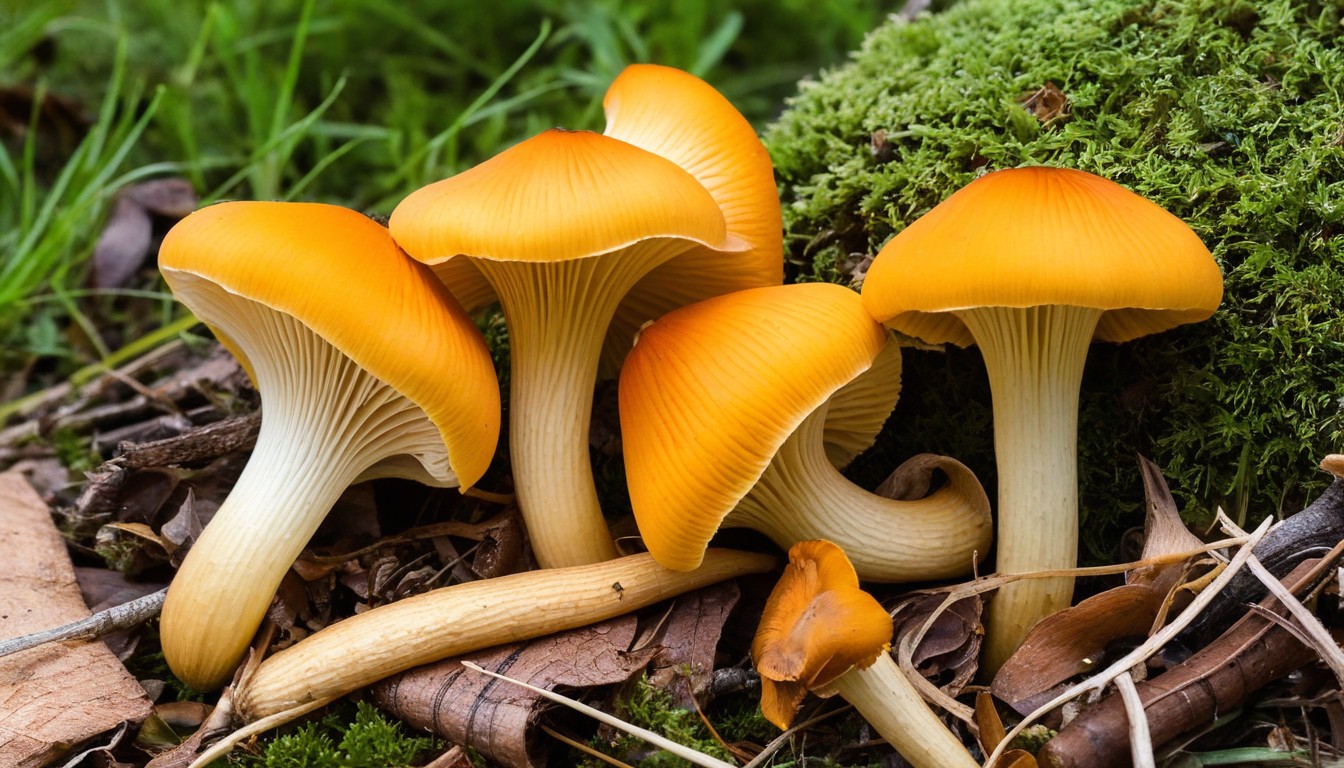
Chanterelle mushrooms are not only delicious but also versatile. Whether you’re a seasoned chef or an amateur cook, we have gathered expert tips and tempting recipes to help you make the most of these forest treasures.
Culinary Tips:
- When cooking Chanterelles, avoid adding too many herbs or spices that may overshadow their delicate flavor profile.
- Consider pairing Chanterelles with ingredients such as garlic, shallots, butter, fresh thyme, and lemon for a delightful culinary experience.
- Try dry sautéing Chanterelles to preserve their natural flavors and prevent them from becoming too mushy.
- For a more intense umami flavor, try combining Chanterelles with other mushroom varieties such as Porcini or Shitake.
- When preparing fresh Chanterelles, gently brush them with a soft brush or use a damp paper towel to remove any dirt or debris.
Recipes:
|
Dish |
Description |
Ingredients |
|---|---|---|
|
Chanterelle Risotto |
A creamy and comforting Italian classic elevated with the earthy flavor of Chanterelle mushrooms. |
Arborio rice, Chanterelle mushrooms, chicken stock, white wine, onion, garlic, Parmesan cheese, butter, olive oil, salt, pepper |
|
Chanterelle and Gruyere Quiche |
A French-inspired savory tart that combines flavorful Chanterelles with nutty Gruyere cheese and buttery pastry. |
Pie crust, Chanterelle mushrooms, eggs, milk, Gruyere cheese, onion, garlic, butter, flour, salt, pepper, nutmeg |
|
Chanterelle Mushroom Soup |
A rich and velvety soup that showcases the rustic flavors of Chanterelles with earthy herbs and cream. |
Chanterelle mushrooms, chicken stock, heavy cream, onion, garlic, thyme, butter, flour, salt, pepper |
These mouthwatering recipes are just a few examples of the culinary possibilities of Chanterelle mushrooms. Let your creativity run wild and experiment with different ingredients and techniques to discover new flavor combinations and dishes.
Safety Precautions and Conservation Practices
As with any outdoor activity, it is essential to take safety precautions while foraging for Chanterelle mushrooms. Ensure that you wear appropriate clothing and footwear, carry a first aid kit, and have a map and compass. Additionally, only harvest mushrooms that you can confidently identify as Chanterelles to avoid accidental ingestion of poisonous mushrooms.
Conservation practices are also crucial in preserving the natural habitats where Chanterelle mushrooms grow. Avoid trampling on vegetation, leave no litter, and do not disturb the soil more than necessary. Only remove mature mushrooms and leave smaller ones to continue growing and spreading spores.
|
Safety Precautions |
Conservation Practices |
|---|---|
|
Wear appropriate clothing and footwear |
Avoid trampling on vegetation |
|
Carry a first aid kit |
Leave no litter |
|
Carry a map and compass |
Do not disturb the soil more than necessary |
|
Only harvest mushrooms you can confidently identify as Chanterelles |
Only remove mature mushrooms, leaving smaller ones to grow and spread spores |
By practicing responsible harvesting techniques and taking safety precautions, we can ensure the sustainability of Chanterelle mushroom populations for years to come.
Conclusion
Foraging and cooking with Chanterelle mushrooms in Washington State is an exciting opportunity to explore the natural world and savor its delicious offerings. From the classic Golden Chanterelle to the rare White Chanterelle, each variety has its own unique flavor and culinary possibilities.
By following the tips and techniques outlined in this guide, you can safely and responsibly harvest Chanterelle mushrooms while preserving their natural habitats. Whether you prefer simple sautés or gourmet dishes, Chanterelle mushrooms are sure to enhance your culinary experiences.
So what are you waiting for? Grab your basket and head into the forest to discover the beauty and bounty of Chanterelle mushrooms in Washington State.
FAQ
What are Chanterelle Mushrooms?
Chanterelle mushrooms are a type of fungi known for their distinct appearance and delightful flavor profile. They have a vibrant color ranging from golden to white, with a characteristic trumpet-like shape and a wavy cap. These prized woodland delicacies are highly sought-after for their unique taste and texture.
What are the different varieties of Chanterelle Mushrooms in Washington State?
In Washington State’s forests, you can find various varieties of Chanterelle mushrooms. The most common one is the Golden Chanterelle (Cantharellus Formosus), with its golden-yellow color and fruity aroma. Another variety is the White Chanterelle (Cantharellus Subalbidus), which has a creamy-white appearance and a milder flavor. Each variety offers its own culinary delights.
When and where can I find Chanterelle Mushrooms in Washington State?
Chanterelle mushrooms can be found in Washington State during the late summer and fall seasons. They thrive in damp, mossy forests with a mix of coniferous and deciduous trees. Look for them in areas where the soil is rich and well-drained. Some popular locations for Chanterelle mushroom foraging include Olympic National Park, Mount Rainier National Park, and the Gifford Pinchot National Forest.
How can I identify and harvest Chanterelle Mushrooms?
Identifying Chanterelle mushrooms requires careful observation of their distinctive features. Look for their trumpet-like shape, wavy cap edges, and vibrant colors. It’s essential to differentiate them from similar species to avoid any potential risks. When it comes to harvesting, gently cut the mushrooms at the base of the stem to ensure their regrowth. Remember to leave some behind, allowing the population to replenish itself and maintain the ecosystem’s balance.
What are some culinary tips and recipes for cooking with Chanterelle Mushrooms?
Cooking with Chanterelle mushrooms opens up a world of culinary possibilities. Sautéing them with garlic and butter brings out their rich flavor, while incorporating them into pasta dishes or risottos adds a delightful earthy taste. You can also use them in creamy soups, omelettes, or even as a pizza topping. The complex flavors of Chanterelle mushrooms pair well with fresh herbs like thyme or sage. Explore our website for a variety of mouthwatering recipes.
How can I preserve Chanterelle Mushrooms for longer use?
There are various methods for preserving Chanterelle mushrooms. One popular technique is drying them, either by air drying or using a food dehydrator. Another option is pickling, which can add a tangy and savory twist to the mushrooms. You can also freeze them by blanching them before storing, ensuring they retain their texture and flavor. Properly preserving Chanterelle mushrooms allows you to enjoy their flavors long after the foraging season has ended.
What are the health benefits associated with Chanterelle Mushrooms?
Chanterelle mushrooms offer several health benefits. They are a good source of essential nutrients such as vitamins B and D, potassium, and copper. Additionally, they contain antioxidants that help boost the immune system and fight inflammation. Including Chanterelle mushrooms in your diet can contribute to overall well-being and promote a healthy lifestyle.
What safety precautions should I take while foraging for Chanterelle Mushrooms?
When foraging for Chanterelle mushrooms, it’s important to prioritize safety. Ensure you have proper identification knowledge to avoid harvesting toxic look-alike species. Use a sturdy basket or mesh bag to collect mushrooms and allow their spores to disperse. Stick to established trails and be mindful of your surroundings to prevent accidents. If you are uncertain about a mushroom’s edibility, it’s best to seek guidance from experienced foragers or mycologists.
Why is responsible harvesting and conservation important when collecting Chanterelle Mushrooms?
Responsible harvesting and conservation practices are crucial to preserve the natural habitats of Chanterelle mushrooms. Over-harvesting can disrupt the delicate balance of the ecosystem and deplete the mushroom population. Leave some mushrooms behind during your foraging trips to allow them to continue reproducing and sustaining the forest’s biodiversity. By practicing responsible harvesting, you contribute to the long-term sustainability of Chanterelle mushrooms and their habitats.

